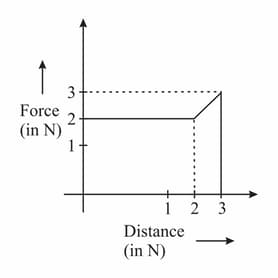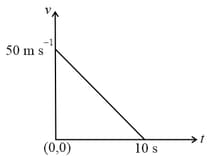EASY
Earn 100
When the mass and speed of the body are doubled, the kinetic energy of the body:
(a)becomes double
(b)becomes four times
(c)becomes eight time
(d)remains unchanged.
50% studentsanswered this correctly
Important Questions on Work, Energy and Power
MEDIUM
HARD

EASY
EASY
MEDIUM
MEDIUM
HARD
[ is the acceleration due to gravity]
MEDIUM
EASY
EASY
EASY
MEDIUM
MEDIUM
(A)
(B)
(C)
(D)
EASY
EASY
HARD
A small block starts slipping down from a point on an inclined plane , which is making an angle with the horizontal section is smooth and the remaining section is rough with a coefficient of friction . It is found that the block comes to rest as it reaches the bottom (point A) of the inclined plane. If , the coefficient of friction is given by . The value of is .......

MEDIUM
EASY

MEDIUM
HARD

